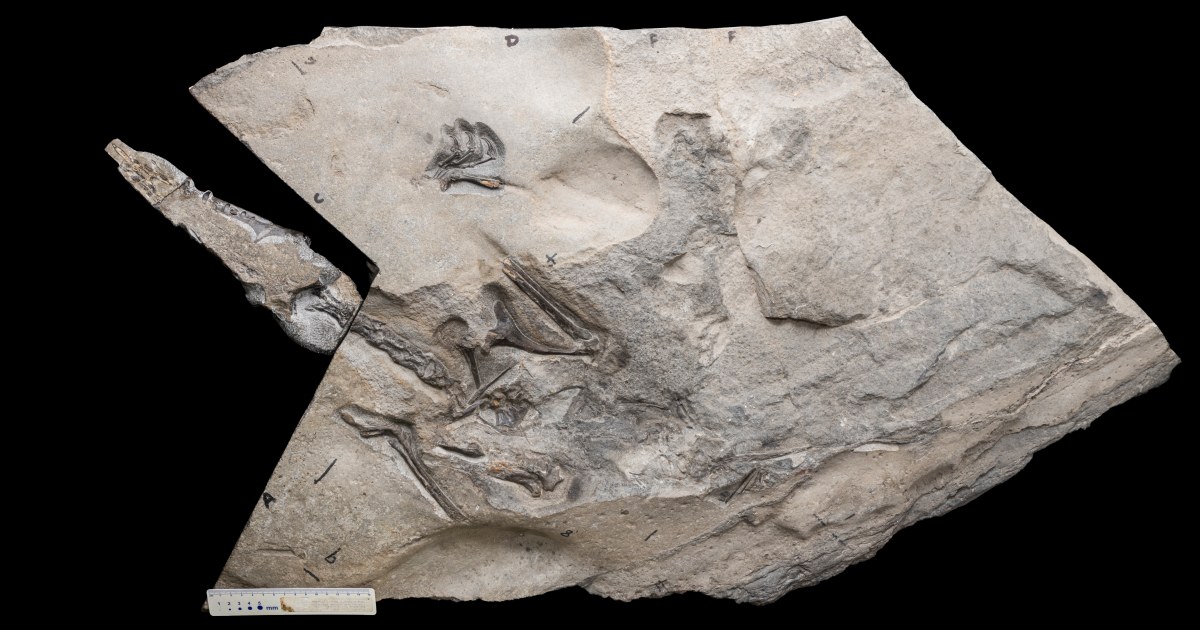
“It was nearly midnight when we finished removing it, and we were heaving around 400 pounds off the beach with our torches and headlamps,” Brusatte said. “It was really the most stressed I’ve been as far as a discovery in the field.”
The near-complete fossil — Brusatte said around 70 percent of the skeleton was found locked up in the rock — is the best-preserved pterosaur found in Scotland. It’s also the largest of its kind ever discovered from the Jurassic period, according to the scientists, who detailed the finding in a study published Tuesday in the journal Current Biology.
The researchers named the species Dearc sgiathanach (pronounced yark ski-an-ach), which means “winged reptile” in Gaelic. The flying reptile lived roughly 170 million years ago and ruled the skies with a wingspan of more than 8 feet, roughly equivalent to a modern-day albatross.
Brusatte and his colleagues sampled thin slices of bone to conduct a forensic analysis of the skeleton. They found that the animal was not yet an adult pterosaur and was still growing when it died. The researchers also used CT scans to study the Scottish specimen’s skull and ears.
“We can see through the scans what this animal’s brain looked like, which is just crazy when you think that it’s 170 million years old,” Brusatte said.
Pterosaurs were the first vertebrates to evolve powered flight, using their expansive wings to flap and generate lift to propel them through the air. These creatures lived through the age of dinosaurs, from 230 million years ago in the Triassic period to the end of the Cretaceous period, around 66 million years ago, when a sudden mass extinction event wiped out approximately three-quarters of all plants and animals on the planet.
Pterosaur specimens have been found around the world, including in Brazil, China and the Italian Alps, but these fossils are exceedingly rare. It’s rarer still to find pterosaur bones that have survived intact, said Natalia Jagielska, a Ph.D. student at the University of Edinburgh and lead author of the study.
“To achieve flight, pterosaurs had hollow bones with thin bone walls, making their remains incredibly fragile and unfit to preserving for millions of years,” she said in a statement.
A near-complete pterosaur specimen from 170 million years ago will help palaeontologists fill in parts of the limited fossil record, and provide a better understanding of how some of these winged creatures grew to be the size of fighter jets.
Source: | This article originally belongs to Nbcnews.com










